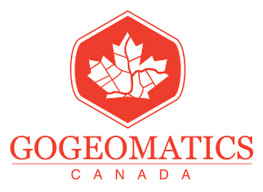
- Geospatial mapping to help identify threats to South Carolina farmland
- Mapping the Future of Energy Management with Geospatial Analytics
- Inspire the younger generation!
- Transforming the collection of high-precision geodetic monitoring data
- Taylor Geospatial Institute hires 1st executive director
- ProtectedSeas releases global interactive map of marine protected areas
Geospatial mapping to help identify threats to South Carolina farmland
The American Farmland Trust, a South Carolina government partnership with advocacy groups, has developed a modelling software that combines sophisticated variables with GIS mapping software. The goal is to have a tool capable of pinpointing “land-based data as broadly or precisely as the user requests” to help predict future events and adjust for those changes. This tool will help South Carolina’s farmland manage risk in their respective areas to help protect their land from foreseeable threats. The tool can also help inform local and state policymakers by combining geospatial analysis and policy insights.
Read more here

Mapping the Future of Energy Management with Geospatial Analytics
Global energy demand is one of the world’s biggest concerns, and finding ways to manage and optimize energy collection and transport is a multifaceted problem. By leveraging geospatial tools and data, managing “the factors that influence energy production, consumption, and distribution” can be analyzed and visualized to best demonstrate the best course of action when tackling these problems. One of the examples the article gets into is the planning and development that needs to go into integrating renewable energy to find the most suitable locations for the specific type of energy.
Read more here

Inspire the younger generation!
There’s a growing concern over the lack of talent pursuing geospatial work despite the growing demand for GIS based data requests and the rapidly evolving industry due to new tech and AI. However, several countries across the world are putting out new ad campaigns to gain more interest with younger crowds. The article looks at how German and Singapore have used interactive, real world examples to show how the application of geospatial work is used in the real world.
Read more here

Transforming the collection of high-precision geodetic monitoring data
The Locator One, high-precision geodetic data collection tool, has been sold and leased to companies across the world which focus on construction and infrastructure. The device takes 5mm in height (Z) and 3mm horizontally (XY) accurate data while filtering out poor data for a 95% accuracy rate. The device offers sustainable, cost-effective, and efficient means of data collection in urban environments.
Read more about the applications here

Taylor Geospatial Institute hires 1st executive director
The Taylor Geospatial Institute (TGI), a St. Louis research institute, has named Dr. Nadine Alameh as the first executive director. TGI focuses on geospatial technology and has done research in food systems, geospatial health, and national security. Dr. Alameh will lead the eight regional research institutions while also pursuing further expansions into establishing more hubs.
Read more here

ProtectedSeas releases global interactive map of marine protected areas
ProtectedSeas has launched the world’s first global marine life regulations and their boundaries map. This marine conservation organization connected with the Anthropocene Institute to help develop this intractable map. The map, called Navigator, is free and is “managed areas across 220 countries and territories and in 25 languages”.
Read more about the article here and see the intractable map here






Be the first to comment